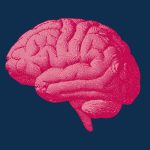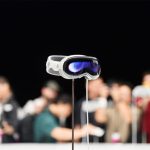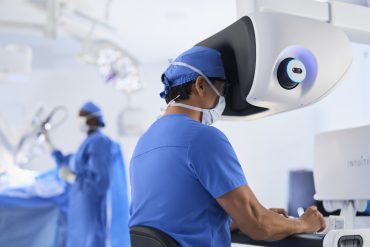
- Health Tech
- Neurotechnology
- Privacy & Regulation
Inner-Speech BCI Breakthrough: Patients “Speak” via Thought
5 minute read

Brain-computer interface technology enables paralyzed patients to communicate thoughts directly through neural signal processing
Key Takeaways
- 74% accuracy achieved in inner speech decoding: Stanford researchers successfully decoded participants’ internal thoughts into speech using brain-computer interfaces, marking a breakthrough for paralyzed individuals who cannot attempt physical speech.
- $10.27 billion market opportunity by 2030: The AI-powered speech synthesis market projects explosive growth from $4.04 billion in 2025, driven by advances in neural decoding and voice generation technologies.
- Tech giants accelerate patent race: Google DeepMind, Nvidia, Intel, OpenAI, and Meta intensify R&D investments in inner speech AI capabilities, signaling major competitive repositioning in brain-computer interfaces.
Introduction
Computers can now decode human thoughts into speech with unprecedented accuracy, achieving up to 74% precision in translating internal monologue from a 125,000-word vocabulary. This breakthrough in brain-computer interface technology represents a fundamental shift from existing systems that require users to attempt physical speech movements.
The advancement addresses a critical limitation for individuals with severe paralysis, ALS, or brainstem stroke who struggle with current assistive technologies. Unlike traditional brain-computer interfaces that rely on attempted muscle activation, inner speech decoding operates purely on neural activity patterns.

Key Developments
Researchers from Stanford University, UC Berkeley, and UC San Francisco conducted parallel studies demonstrating the viability of inner speech decoding. The Stanford team, led by Frank Willett, co-director of Stanford’s Neural Prosthetics Translational Laboratory, focused on distinguishing between imagined speech and attempted physical speech patterns.
Four participants with implanted microelectrode arrays in motor cortex regions underwent testing protocols. The research team used AI models trained on both inner speech patterns and previously collected attempted speech data to achieve translation accuracy.
Complementary findings published in Nature Human Behaviour showed two participants with tetraplegia achieving 55% and 79% average decoding accuracies in internal speech tasks. These results demonstrated significant neural representation in the supramarginal gyrus region of the brain.
Market Impact
The AI-powered speech synthesis market responds positively to these developments, with projections showing growth from $4.04 billion in 2025 to $10.27 billion by 2030. The related AI voice generator segment expects expansion from $2.49 billion to $5.15 billion during the same period.
Voice cloning technology specifically targeting translation applications anticipates reaching $1 billion in 2025 with a 42% compound annual growth rate. These market movements reflect investor confidence in neural interface applications beyond medical uses.
Healthcare technology stocks and assistive device manufacturers show increased activity as the research demonstrates commercial viability for brain-computer interface products.
Strategic Insights
The technology creates new competitive dynamics in the assistive technology sector, where current solutions achieve 98% accuracy with attempted speech but require significant physical effort from users. Inner speech decoding offers a less demanding alternative despite lower initial accuracy rates.
Major technology companies position themselves strategically around neural interface patents and development capabilities. The shift toward on-device AI models that operate without internet connectivity becomes crucial for privacy and response speed in brain-computer applications.
Generalist models capable of handling multiple communication modalities gain importance, with industry predictions suggesting 35% of AI-driven speech tools will incorporate such capabilities by late 2025.

Expert Opinions and Data
Erin Kunz, postdoctoral neuroengineer at Stanford University, emphasizes the significance: “This is the first time we’ve managed to understand what brain activity looks like when you just think about speaking.” Her team’s micro sensor arrays captured neural patterns that AI models successfully interpreted into language.
Edward Chang, senior co-principal investigator leading clinical trials at Berkeley and UCSF, states: “This new technology has tremendous potential for improving quality of life for people living with severe paralysis affecting speech.” Chang’s team uses high-density electrode arrays recording directly from brain surfaces.
However, accuracy variations present challenges, with some trials reaching only 46% precision. According to STAT News, researchers attribute these fluctuations to weaker neural signals produced during inner speech compared to attempted physical speech.
Participants in ongoing BrainGate trials express preference for inner speech communication due to reduced physical effort requirements. Researchers compare the challenge faced by individuals with speech disorders to “trying to write with extremely cold hands.”
Conclusion
Inner speech decoding technology demonstrates commercial and medical viability while highlighting significant privacy considerations that require industry-wide standards. The research establishes proof of concept for neural interface applications extending beyond current assistive device limitations.
Current development focuses on expanding brain region coverage and improving signal fidelity to achieve higher accuracy rates. The technology positions the brain-computer interface industry for substantial growth while creating new categories of assistive communication devices for individuals with severe neurological impairments.








